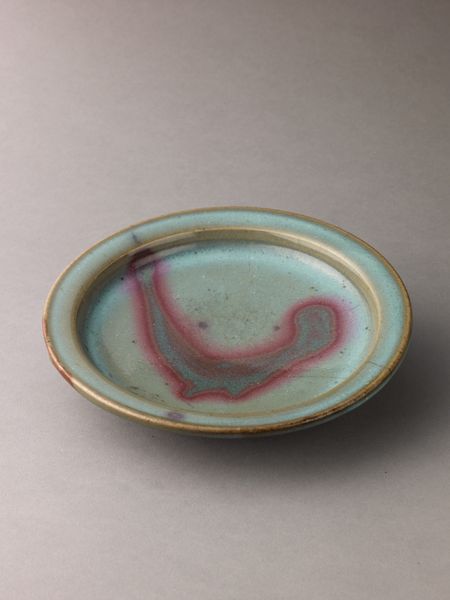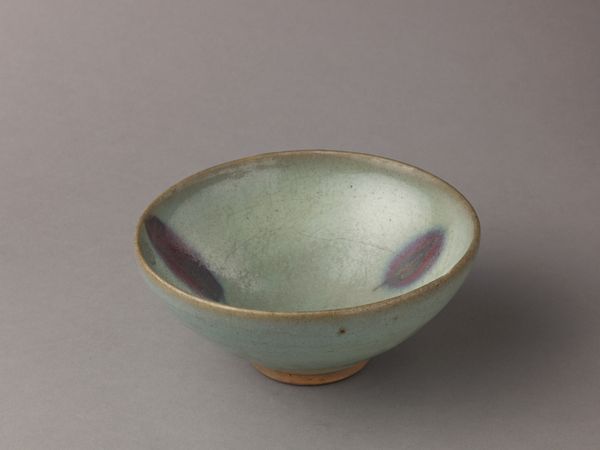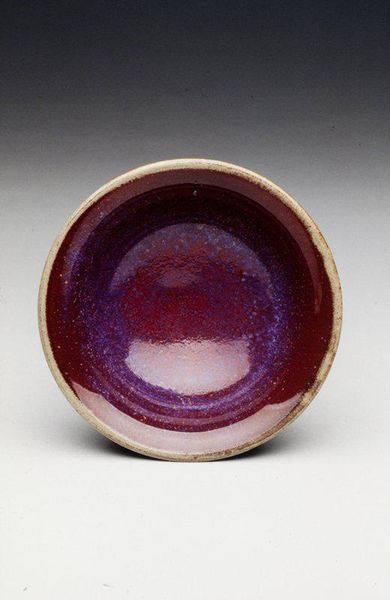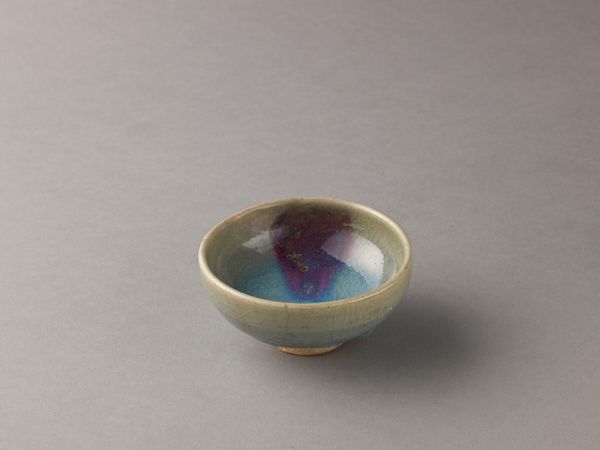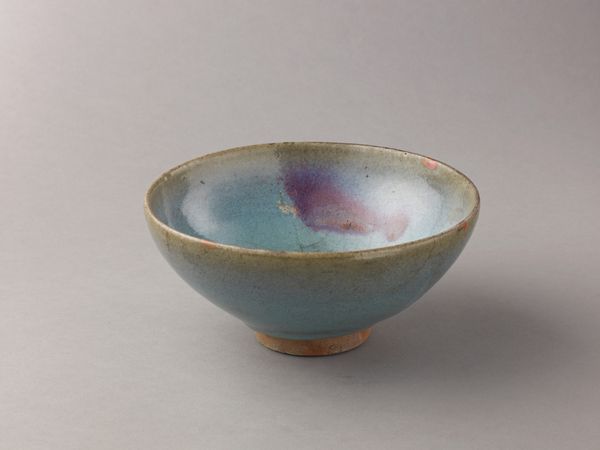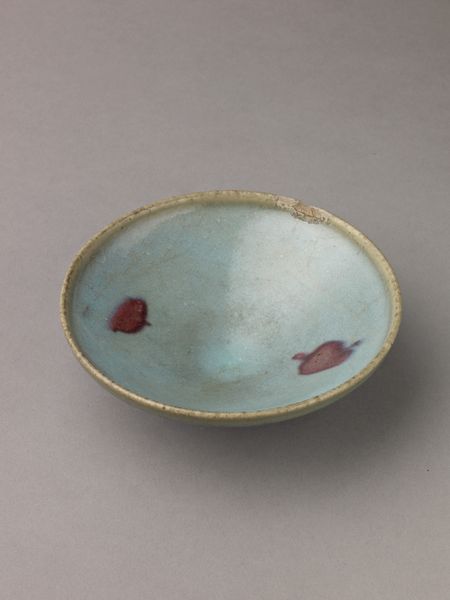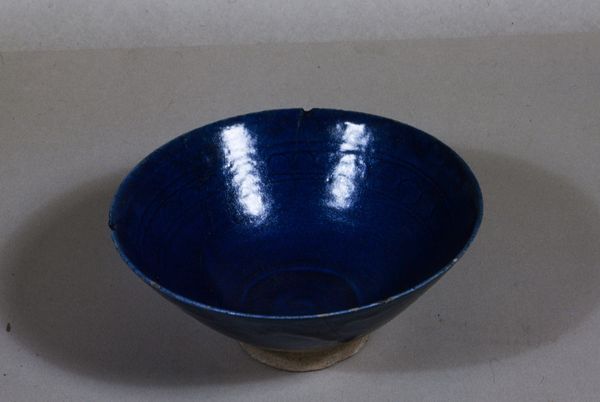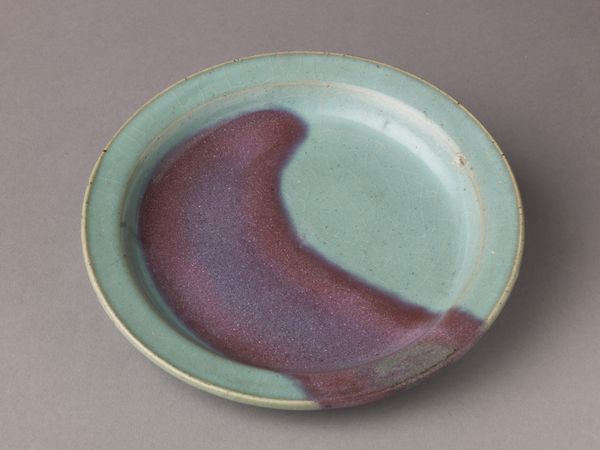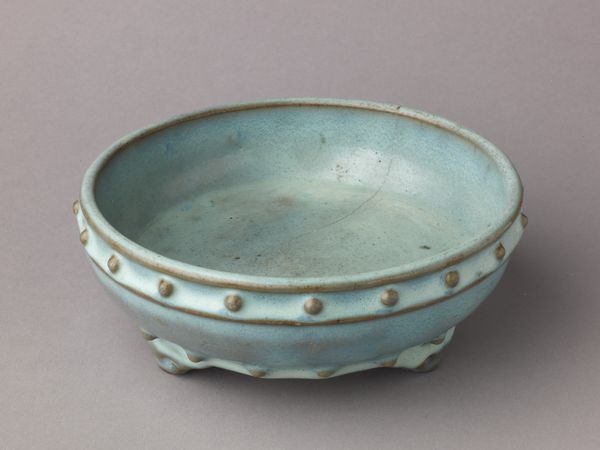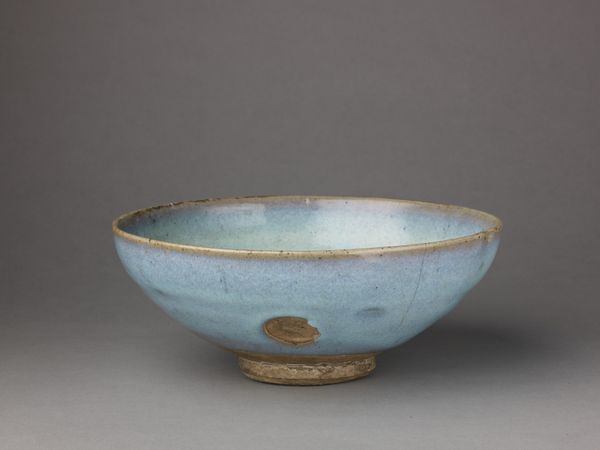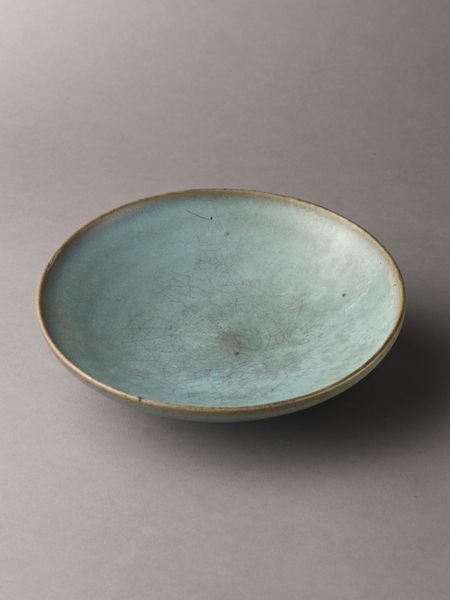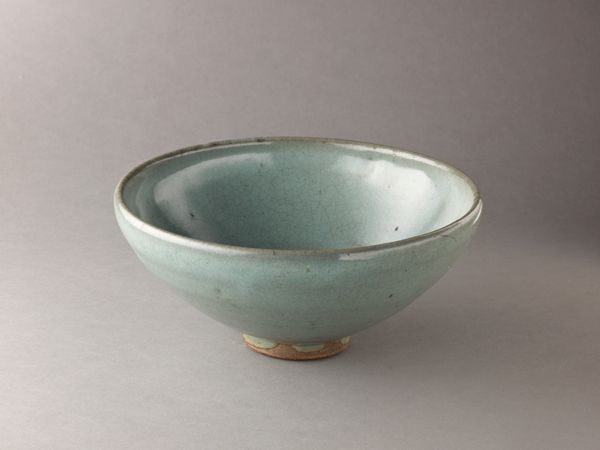
ceramic, earthenware
#
medieval
#
asian-art
#
ceramic
#
earthenware
Dimensions: Diameter: 6 1/4 in. (16.4cm)
Copyright: Public Domain
Editor: Here we have a shallow dish, of Jun-type ware, likely created sometime between 1371 and 1435. It's currently located at the Metropolitan Museum of Art. Made of ceramic earthenware, it strikes me with its intense colour, an almost celestial purple-blue glaze. What stands out to you about this piece? Curator: Initially, one is drawn to the tactile quality suggested by the ceramic material, isn't it? The form itself, that of a shallow dish, offers a study in contained space and the potential of that volume. The most compelling formal element here is, undoubtedly, the glaze. Notice how it pools and thins, creating variations in color and texture. Consider the firing process; the unpredictability is central to its aesthetic. Editor: Absolutely, it's the unpredictability that I find captivating. Do you see any symbolism in the glaze's crackled pattern? Curator: I appreciate your attention to detail. Symbolism might be too definitive a term. But certainly, these patterns activate the surface, they transform it beyond a mere vessel into a miniature landscape of chance and consequence. Note how these irregular, seemingly random occurrences serve to draw the eye and prevent any stagnant reading of the piece. Editor: So you're saying the glaze, through its inherent variability, becomes a key structural component of the work? Curator: Precisely. Its non-uniformity underscores the piece's handmade origins and invites closer contemplation. A perfect example of materiality informing the meaning of the art. Editor: I never thought about the glaze in that structural way! It enriches my understanding of this medieval ceramic piece and the medium itself. Thanks for pointing it out!
Comments
No comments
Be the first to comment and join the conversation on the ultimate creative platform.
